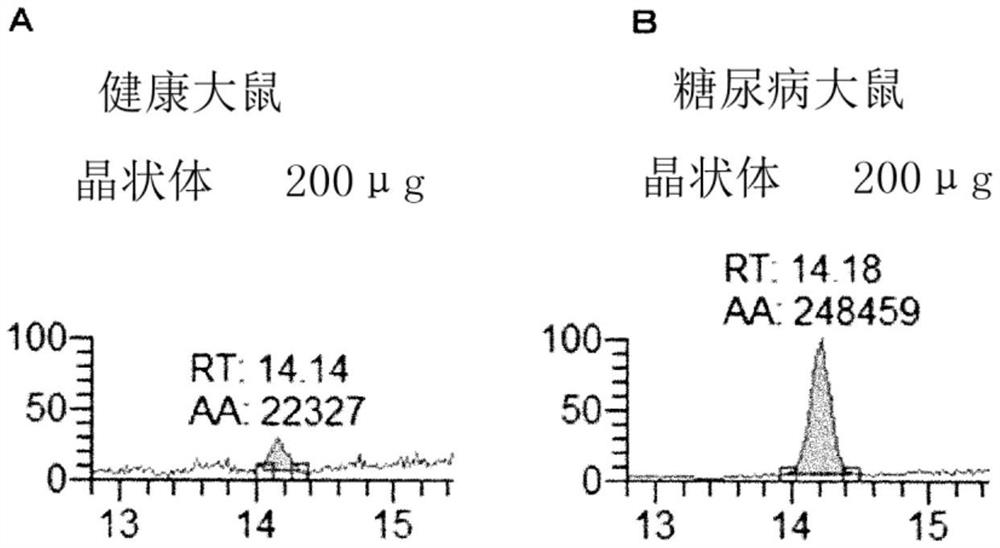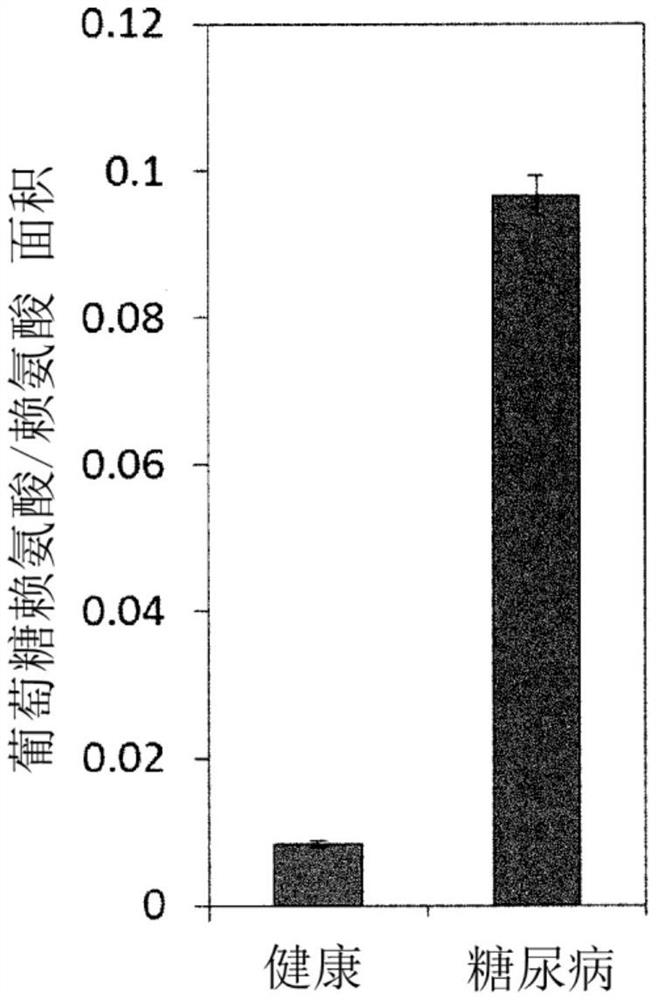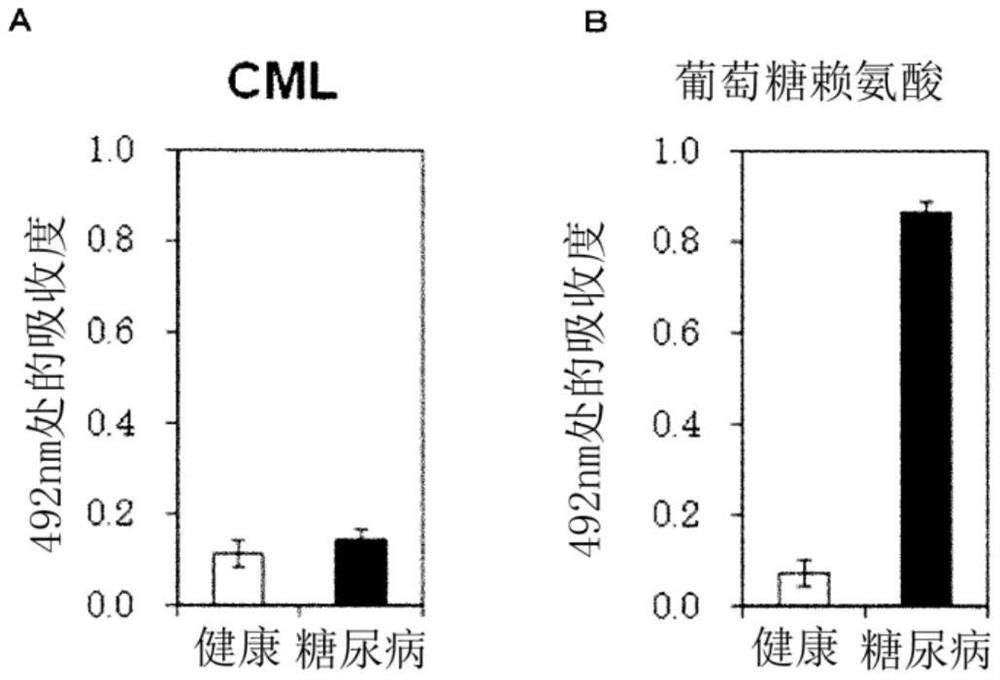Marker for diabetic complications
A technology for complications and diabetes, which is applied in the field of markers for diabetic complications, and can solve problems such as changes in uninvestigated quantities
- Summary
- Abstract
- Description
- Claims
- Application Information
AI Technical Summary
Problems solved by technology
Method used
Image
Examples
Embodiment 1
[0078] (Detection of Glucose Lysine in Organisms (Rats) by LC-MS / MS)
[0079] Substances with increased accumulation in the lens of diabetic-induced rats were isolated and analyzed by LC-MS / MS (the results are shown in figure 1 )and 1 As a result of the identification of the structure by H-NMR, the structure of glucose lysine having the following structure and physical properties was found.
[0080]
[0081] 2-Amino-6-((2,4,5-trihydroxy-6-(hydroxymethyl)tetrahydro-2H-pyran-3-yl)amino)hexanoic acid
[0082] Chemical formula: C 12 H 24 N 2 O 7
[0083] Exact Mass: 308.16
[0084] Molecular weight: 308.33
[0085] m / z: 308.16 (100.0%), 309.16 (14.3%), 310.16 (1.5%)
[0086] Elemental analysis: C, 46.75; H, 7.85; N, 9.09; O, 36.32
[0087] Analysis of glucose lysine in organisms by LC-MS / MS.
[0088] That is, 1 mL of 6N iron-free hydrochloric acid was added to 200 μg of each of the lens fragmentation solutions of healthy rats and diabetic model rats (N=5), and the mixt...
Embodiment 2
[0094] (Detection of Glucose Lysine in Organisms (Rats) by Antibody)
[0095] Using an antibody recognizing glucose lysine and a CML antibody (anti-CML antibody clone 6D12, COSMO BIO), the content of glucose lysine and CML in the lenses of healthy rats and diabetic model rats (N=5) were measured .
[0096] show the result in image 3 . For CML, no significant differences were observed in the amounts in the lens of healthy and diabetic model rats. On the other hand, with regard to glucose lysine, a significant difference was observed for the amount in the lens of healthy rats and diabetic model rats.
[0097] It is clear that glucose lysine is significantly increased in the development of diabetes and its complications in the assay using a biological sample.
Embodiment 3
[0099] (Detection of Glucose Lysine in Organisms (Mouse) by LC-MS / MS)
[0100] For healthy mice (N=12) and diabetic model mice (N=20), based on the method of Example 1, glucose lysine in the lens was detected.
[0101] show the result in Figure 4 . As far as the elution position is concerned, glucose lysine and internal standard are all around 14min ( Figure 4 of A). It was shown that glucose lysine in the lens of diabetic model mice was significantly increased compared to healthy mice ( Figure 4 of B).
PUM
 Login to View More
Login to View More Abstract
Description
Claims
Application Information
 Login to View More
Login to View More - Generate Ideas
- Intellectual Property
- Life Sciences
- Materials
- Tech Scout
- Unparalleled Data Quality
- Higher Quality Content
- 60% Fewer Hallucinations
Browse by: Latest US Patents, China's latest patents, Technical Efficacy Thesaurus, Application Domain, Technology Topic, Popular Technical Reports.
© 2025 PatSnap. All rights reserved.Legal|Privacy policy|Modern Slavery Act Transparency Statement|Sitemap|About US| Contact US: help@patsnap.com



